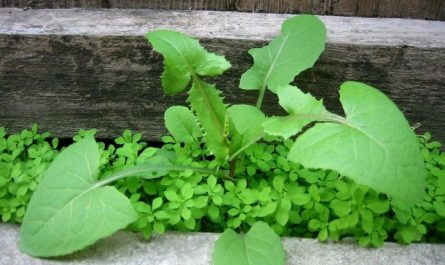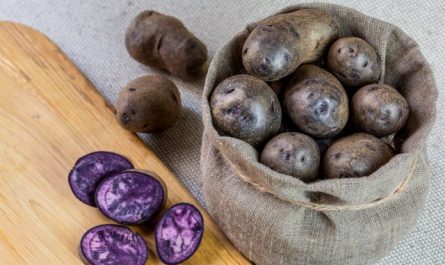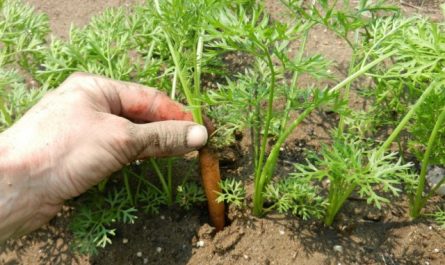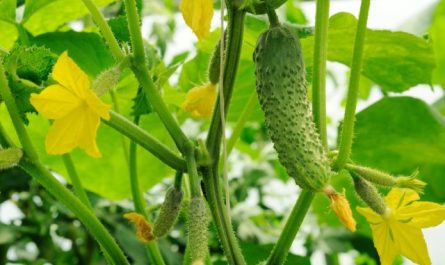A hedge is a popular design solution, widely used in landscape design. It replaces a fence, absorbs noise, holds dust flying from the road, divides the territory into zones and is simply a pleasant decoration of the site. Green fences are created by regular pruning and giving strict geometric shapes to plants or with the help of single-row and multi-row freely growing trees, vines and bushes. And beauty can also be useful if you plant a green hedge of shrubs with edible fruits.

Let’s figure out which berry crops are most suitable for creating a living fence.
Types of hedges made of shrubs with edible berries
Edible berry hedges can serve many purposes:
- protect the garden from prying eyes, wind,
- prevent strangers and animals from entering the local area,
- be design elements,
- improve the microclimate and environmental conditions on the site.
Different plants are used for different purposes. We will tell you about the main types of hedges and the most suitable berry bushes for their creation.
Zoning hedge
The task of a zoning fence is to delimit a plot of land into separate zones and beautifully highlight some areas. It can be planted along paths, a playground, and used to separate outbuildings from the adjacent territory.
If you make a living fence around the perimeter of the garden, it will protect vegetable crops from the wind in summer, and act as a snow-retaining barrier in winter. For a zoning fence, it is better to use not too tall shrubs so that the area does not visually shrink and continues to look like a single space.
gooseberries
A valuable berry bush with many advantages. The crop begins to bear fruit early and is long-lived. With good care and timely pruning, it produces abundant harvests in one place for up to 40 years. The berries are stored for a long time and are characterized by excellent transportability. For the variety and richness of flavors, they were nicknamed “northern grapes”.

The bushes are not tall, growing up to 1-1,2 m. They can be planted along the garden, so they will not shade the beds. Different varieties have green, yellow, pink, crimson, burgundy and purple berries. If you plant them interspersed, you will get a very bright, picturesque fence.
Important! Gooseberry is a self-fertile plant, but if you plant several varieties next to each other, the yield of each bush will increase by 40-70%.
Gooseberry is a natural healer. This is especially true for plants with dark-colored berries. The fruits contain P-active substances, pectin, serotonin, and folic acid. They improve metabolism, bowel function, and are useful for those suffering from anemia.
The most delicious varieties of gooseberries:
- “Chernomor”,
- “Kolobok”
- “Neslukhovsky”
- “Plum”,
- “Russian Yellow”.
Red and white currants
Currant bushes grow up to 1,5-2 m in height. They are perfect for arranging low hedges dividing the plot into zones. The crop is unpretentious, grows well on various soils, but does not like excessive moisture and shade. The bush is productive, yielding up to 8-9 kg of fruit per season, which hang for a long time without falling off.

White currants taste more delicate than red ones. Both are very useful. They contain pectin, P-active substances, ascorbic acid, have healing properties: they remove radioactive substances from the body, have an antiseptic and thirst-quenching effect. Hedges look especially impressive when the harvest is ripening, if you plant white and red currant bushes alternately.
Better varieties of red currants:
- “Natalie”,
- “Early Sweet”
- “Dutch Red”
The best varieties of white currants:
- “Harvest”
- “Diamond” (“White Fairy”),
- “Smolyaninovskaya”.
Camouflaging green hedge
In gardening associations, it is forbidden to erect solid fences between plots so that they do not shade adjacent plots. Transparent and unsightly chain-link fencing is usually used as a fence. It is along it that a green hedge of shrubs with edible fruits is most often planted. On the one hand, such plantings hide the plot from the eyes of neighbors, and on the other, the mesh does not block the sun and berry crops grow well along it.
Camouflaging living fences are made to hide old, unsightly buildings, peeling wooden fences made of boards, compost heaps and other unattractive places. They are also planted next to open gazebos to create a secluded corner with a shady area there. For a camouflaging living hedge, vines or plants at least 1,5 m high are usually chosen.
briar
Our grandmothers and great-grandmothers planted rose hips in their gardens as a hedge. This is one of the best crops for a green fence. Not only is the bush thorny and difficult to get through, but it is also unusually beautiful. The bush is a relative of the rose and is no less exquisite than its luxurious relative.

In May or June, the rose hips are completely covered with large pink, crimson, and less often white, yellow or cream flowers. They emit a subtle, sweet aroma that attracts bees. The fruits ripen in late summer – early autumn. If they are not collected, they hang on the bush in winter until birds peck them.
Rosehip is a well-known multivitamin and medicinal plant. The pulp of the berries contains up to 4,7% tannins, 8-11% sugars, 0,7-2,6% acids, vitamins C, K, carotene. The fruits slow down the development of atherosclerosis, improve immunity, and have a tonic effect. The berries are dried, made into jam, compotes, and frozen for the winter.
You can plant cultivated varieties of rose hips as a hedge.:
- “Grocery”,
- “Globe”,
- “Large-fruited VNIIV”.
Black currant
One of the most common berry crops in our country. It is productive, unpretentious, early-bearing, and fruitful. It produces very tasty and healthy fruits. So why not combine the useful with the pleasant and use it as a hedge. Blackcurrant is a compact or spreading bush, depending on the variety. The bushes grow up to 2 m high, so they can easily cover a boring fence with their bright, green foliage.

Currant fruits are especially valued for their distinct taste, characteristic aroma and healing properties. They contain up to 4,1% free organic acids, 5-16,4% sugars, vitamins C, D, K, E, D, A, P-active substances, mineral salts. In folk medicine, they are used to improve metabolism, prevent hypertension, atherosclerosis, and colds. This is one of the most beloved berries of gardeners. It is frozen, boiled, and used to make compotes, wines, jams and preserves.
The best varieties of black currant:
- “Gulliver”,
- “The Leningrad Giant”
- “Vologda”,
- “Dachnitsa”,
- “Pygmy”.
Actinidium colomicta
A perennial shrubby liana with large, beautiful green leaves. In some varieties, their tips turn white or pink in summer. This makes the plant look especially elegant. In autumn, the leaf blades turn yellow or pink. The edges are often darker than the middle, which looks very impressive.

Kolomikta is the most winter-hardy of all actinidia, which simplifies its care. In the Moscow region, adult bushes overwinter without shelter. Unlike most berry plants, actinidia grows beautifully in partial shade. With the help of this crop, you can hide the most unsightly fence, barn or create a shady corner in the gazebo. The liana, formed into several trunks, completely wraps around the supports, creating a green wall.
Important! To obtain fruit, male and female plants must be planted nearby.
Actinidia is one of the most useful berry crops. Its elongated fruits resemble green grapes “Ladyfingers” in appearance. In terms of ascorbic acid content, they compete with rose hips and have a strong antiscorbutic effect. Ripe berries are very tender, aromatic, with notes of strawberry, pineapple, banana and apple in the taste.

The following varieties are suitable for creating a green hedge::
- “University”,
- “September”,
- “Abundant”,
- “Coin”,
- “Gourmet”.
“The Enemy Shall Not Pass”, or a Protective Hedge
To create a protective wall, plants are planted tightly. So that it is difficult for not only people, but also neighboring dogs and wild animals to get through them. Naturally, such plantings will not protect the territory 100% from invasion, but intruders can climb over an ordinary fence. A hedge with the function of a real full-fledged fence is usually made of bushes and trees covered with thorny thorns and growing at least 2 m in height.
Barberry
Barberry is one of the best plants for a hedge. It is unpretentious, prickly, tolerates dense planting, easily tolerates pruning, is a wonderful ornamental plant, honey plant. Its red, coral or bluish-purple fruits do not fall off in winter. In autumn, the leaves acquire a yellow, black, orange or almost purple hue. They look very impressive! The bush grows better in the sun, does not like waterlogged soil. But it tolerates insufficient soil fertility. To get a good harvest, you need to plant several bushes nearby.

The fruits of edible barberry varieties are small, elongated, refreshingly sour. They contain malic acid, vitamins C, P, E. They are dried and added as a seasoning to meat, compotes and jam are made from them.
Important! Not all varieties of barberry have edible fruits. When buying seedlings, you must always check whether the berries can be eaten.
Hawthorn
A shrub or tree, up to 6 m high. Grows well both in the sun and in partial shade. This is one of the best plants for a hedge. It easily tolerates pruning and shaping. Hawthorn is unpretentious, frost-resistant, undemanding to soils, over time it forms a dense, impassable fence, and even a thorny one.

The plant looks very attractive throughout the warm period. In spring, it is covered with white or creamy fragrant flowers. In summer, it pleases the eye with dark green leaves. And in September, it bears fruits of red, orange, black or yellow color.
Important! Hawthorn needs to be pruned regularly. Rare pruning leads to the lower part of the plant being exposed.
Hawthorn berries are a real treasure trove of useful substances. They contain choline, carotene, crataegus and oleanolic acids, improve the functioning of the heart muscle and regulate blood pressure. Now, along with prickly varieties, breeders have developed thornless hawthorns (“Mao-Mao”, “Zlat”, “Lyudmil”). This makes it much easier to pick berries.
Sea buckthorn
Sea buckthorn is an unpretentious plant with large thorns, capable of quickly forming impassable thickets. Only shrub forms growing up to 3 m in height are suitable for creating hedges. Trees cannot be used for this purpose. Many of them reach more than 6 m in height, and instead of a fence at the bottom you will only get bare trunks. Currently, along with thorny varieties, almost thornless varieties have been created, from which it is easier to harvest.

Important! The culture is self-sterile. To obtain berries, it is necessary to plant female and male plants next to each other.
Sea buckthorn is the leader in the content of useful substances and healing properties among berry crops of the temperate climate zone. Its bright yellow or orange fruits are rich in vitamins C, A, E, F, B, PP. They contain carotene, folic acid, coumarin, tannins. Oil and berries are used for vitamin deficiency, to combat inflammatory processes. Externally for healing wounds and healing rashes, eczema. The fruits are collected in September and October.
The best shrub varieties for the garden:
- “Elizabeth”,
- “Moskvichka”,
- “Elegant.”
Features of planting a hedge of shrubs with edible fruits
A hedge is planted in spring or autumn. Plants are placed in one, two rows or several lines in a checkerboard pattern. The denser the planting, the less fruit each plant will bear, so it is necessary to maintain a balance. On the one hand, berry crops need a sufficient feeding area, on the other hand, the fence should be without holes and bald spots.
Gooseberries and currants are best planted in one row at the minimum recommended distance between bushes (90 cm – 1 m). Barberry, blackberry, hawthorn, and rose hips tolerate dense staggered planting well. They are planted in holes or trenches at a distance of 40 to 80 cm from each other in a row and 30-50 cm between rows. The distance may vary depending on the type and variety of plants.
Important! The rows are planted along a pre-stretched rope, otherwise the fence will be crooked. When several different varieties of one berry crop (even self-fertile) are planted next to each other, the yield of each bush increases.




















